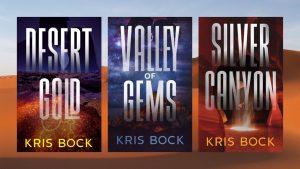Pacing, Line by Line: #Writing Advice by Chris Eboch
Pacing, Line by Line: #Writing Advice by Chris Eboch @Kris_Bock
 Fast-paced. Gripping. A page turner. “I couldn’t put it down.” Why do some books get these comments, while others are called slow or flat?
Fast-paced. Gripping. A page turner. “I couldn’t put it down.” Why do some books get these comments, while others are called slow or flat?
Characters, plot, setting, and theme are all part of pace. Create compelling characters, so readers will care about them and want them to succeed. Make sure you have a lot happening, whether action scenes, relationship challenges, or laugh-out-loud comedy.
Include some surprise twists to grab the reader’s attention whenever it might be wandering. Keep the stakes high and vitally important to the main character. Set the story someplace unusual and interesting, and even the setting can help keep things moving. Explore a theme that gets readers thinking.
Pacing with Paragraphs for Stronger Writing
Once you have a fast-paced draft, you can pump up the pace even more by focusing on line-by-line editing.
In fact, relatively minor changes in sentence structure and paragraphing can make a scene much more dramatic. A page that is one solid block of text looks dull, especially in our fast-paced world with so many other forms of media vying for attention.
Short paragraphs cause the reader’s eyes to move more quickly down the page. That can give a sense of breathless speed. The book literally becomes a page turner because the reader finishes each page so quickly.
Short version: Make action scenes more dramatic by using short paragraphs.
Here’s the end of chapter 1 from my romantic adventure, Desert Gold: A Treasure Hunting Romantic Suspense (written as Kris Bock). After uncovering a clue to a long-lost treasure, Erin hops on her bicycle to meet a friend.
She’d gone a block when she heard the hum of a car engine as it pulled out from a side street behind her. She rode along the very edge of the pavement, even though the car would have plenty of room to pass her without oncoming traffic.
Erin glanced over her shoulder. The black SUV 20 feet behind her hadn’t bothered to pull out into the road at all. Jerk. When would drivers learn to share the road with bicyclists? Erin pulled onto the two-foot-wide gravel strip between the pavement and the ditch. She couldn’t stop without risking a skid, but she slowed so the SUV could pass.
The engine roared. Erin glanced back again.
Black metal bore down on her. Her heart lurched and the bike wobbled. This guy was crazy! She whipped her gaze forward, rose up in the seat, and pumped the pedals with all her power, skimming along inches from the ditch. He was just trying to scare her. She’d get his license plate and –
The bumper punched her back tire. The bike seemed to leap into the air.
She went flying. The dried mud and weeds of the ditch seemed to rise up to meet her.
She didn’t even have time to scream.
Note the very short paragraphs, each one or two short sentences. That gives those moments maximum impact. Their intensity is balanced by the longer paragraphs (but still not too long) where Erin has time to observe and react.
Now imagine all that in one paragraph. It wouldn’t have the same pace. Still, I often see chapter endings with tons of action strung together in one big paragraph.
Short Sentences or Leisurely Language?
Sentence length affects pace as well. Short sentences have a different rhythm from long ones. Long sentences can feel leisurely, while short ones have blunt impact – the difference between a hug and a slap.
You want a variety of sentence and paragraph lengths, because if everything is the same the story will feel clunky. But save the longer sentences and paragraphs for description and introspection. Use short sentences and short paragraphs for maximum impact in action scenes.
Here’s another example, this time from my children’s mystery The Eyes of Pharaoh (written as Chris Eboch). This is the end of a chapter where Seshta is waiting for a friend who is supposed to bring important news.
Ra, the sun god, carried his fiery burden toward the western horizon. Horus caught three catfish. A flock of ducks flew away quacking. Dusk settled over the river, dimming shapes and colors until they blurred to gray. The last fishing boats pulled in to the docks, and the fishermen headed home.
But Reya never came.
The long paragraph of description conveys time passing slowly. Putting the last short sentence into its own paragraph gives it added emphasis, causing it to seem more important and ominous. It becomes a cliffhanger chapter ending.
What if I’d attached that last sentence to the previous sentence as a subordinate clause? It would have been buried under other information. It would have felt like the scene simply ended without anything happening. That wouldn’t have the same impact.
Is Your Writing Well Paced?
Print your story or a chapter of your novel and look at your paragraphing. Don’t read it, simply see how it looks on the page.
Do you have a variety of sentence and paragraph lengths, or is everything about the same length? Do you favor short paragraphs or long ones?
Now look closer. Do you have long paragraphs of action, where several things are happening within one paragraph? Consider breaking that into shorter paragraphs, starting a new one for each small piece of action, as in the first example above.
Look at your chapter endings, especially when you have cliffhangers. (Learn more about cliffhangers.)
Can you break your paragraphs into smaller pieces for more drama? Can you shorten your sentences?
How does the feel of the section change as you play with sentence and paragraph length? Note the difference with small changes in wording and punctuation. For example, compare these:
I heard a noise and looked up with a gasp in time to see a huge rock tumbling toward me.
I heard a noise above my head. I looked up and gasped.
A boulder tumbled toward me.
It’s almost hard to follow the action in the first example, because too much happens in one sentence. Shorter sentences clarify the action and give each piece more impact.
You can do this exercise with published books as well. Note sections that are poorly paced and try rewriting them to see how things change as you vary the structure.
Master pacing, and you’ll keep those pages turning.
Do you consider paragraph length and sentence length in your writing?

Chris Eboch is the author of Advanced Plotting and You Can Write for Children: How to Write Great Stories, Articles, and Books for Kids and Teenagers (available for the Kindle, in paperback, or in Large Print paperback). She has written over 60 published books for children. Her novels for ages nine and up include The Eyes of Pharaoh, a mystery in ancient Egypt, and The Well of Sacrifice, a Mayan adventure. Learn more at her webpage or her Amazon page, or check out her writing tips at her Write Like a Pro! blog.
Chris also writes for adults under the name Kris Bock. Kris Bock writes novels of romance, mystery, and suspense. Her Furrever Friends Sweet Romance series features the employees and customers at a cat café. Watch as they fall in love with each other and shelter cats. Get a free 10,000-word story set in the world of the Furrever Friends cat café when you sign up for the Kris Bock newsletter. You’ll also get a printable copy of the recipes mentioned in the cat café novels, plus fun content about cats, announcements of new books, sales, and more.
Kris also writes romantic suspense set in the Southwestern U.S. If you love Mary Stewart or Barbara Michaels, try Kris Bock’s stories of treasure hunting, archaeology, and intrigue in the Southwest. Learn more at www.krisbock.com or visit Kris Bock’s Amazon US page or Amazon UK page. (For other countries click here.)
Desert Gold follows the hunt for a long-lost treasure in the New Mexico desert. In Valley of Gems, estranged relatives compete to reach a buried treasure by following a series of complex clues. In Silver Canyon, sparks fly when reader favorites Camie and Tiger help a mysterious man track down his missing uncle. See the Treasure Hunting Romantic Suspense series page.
Category: How To and Tips



